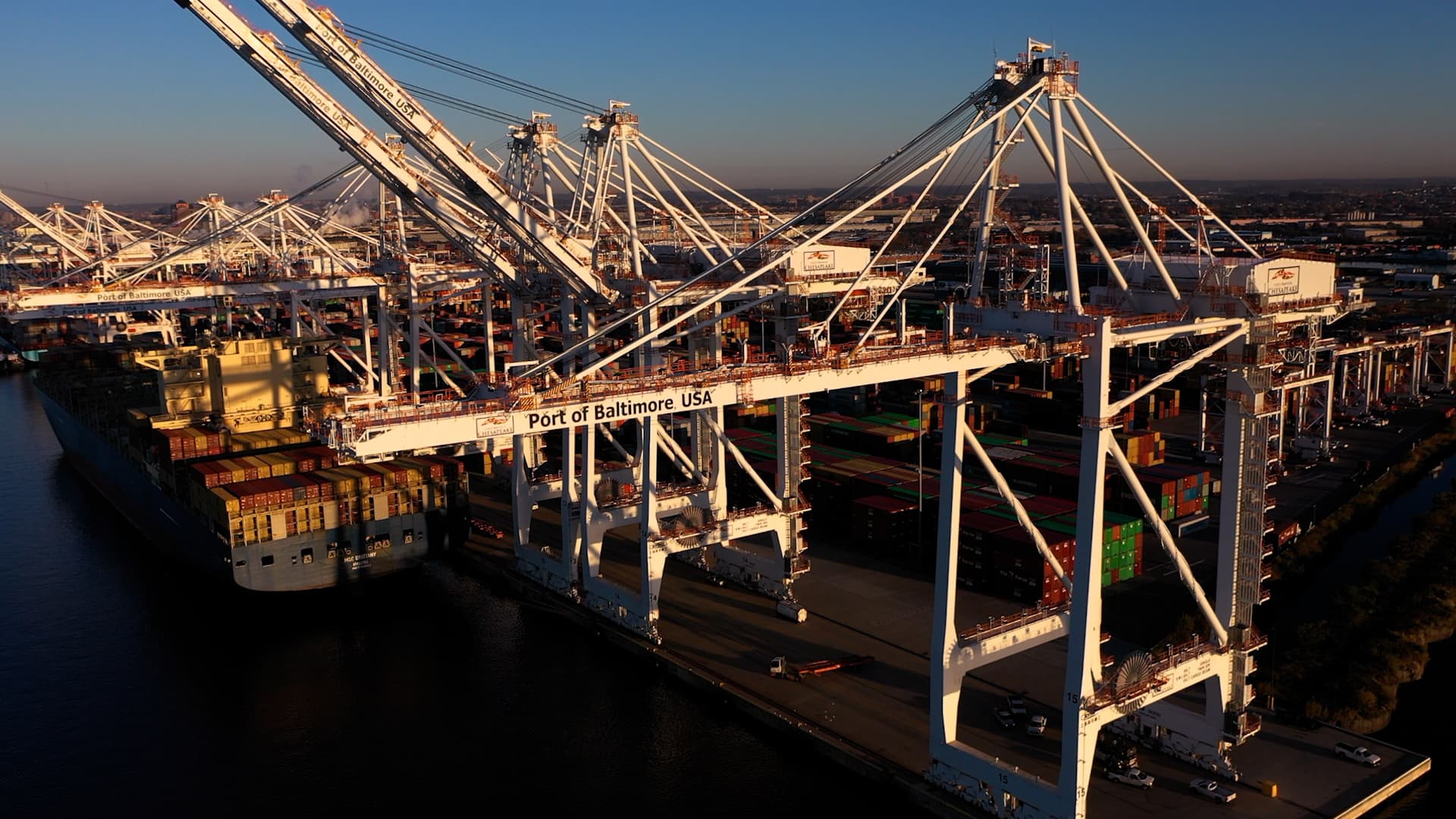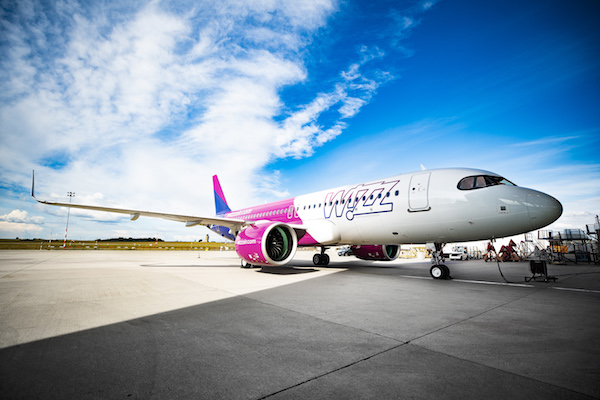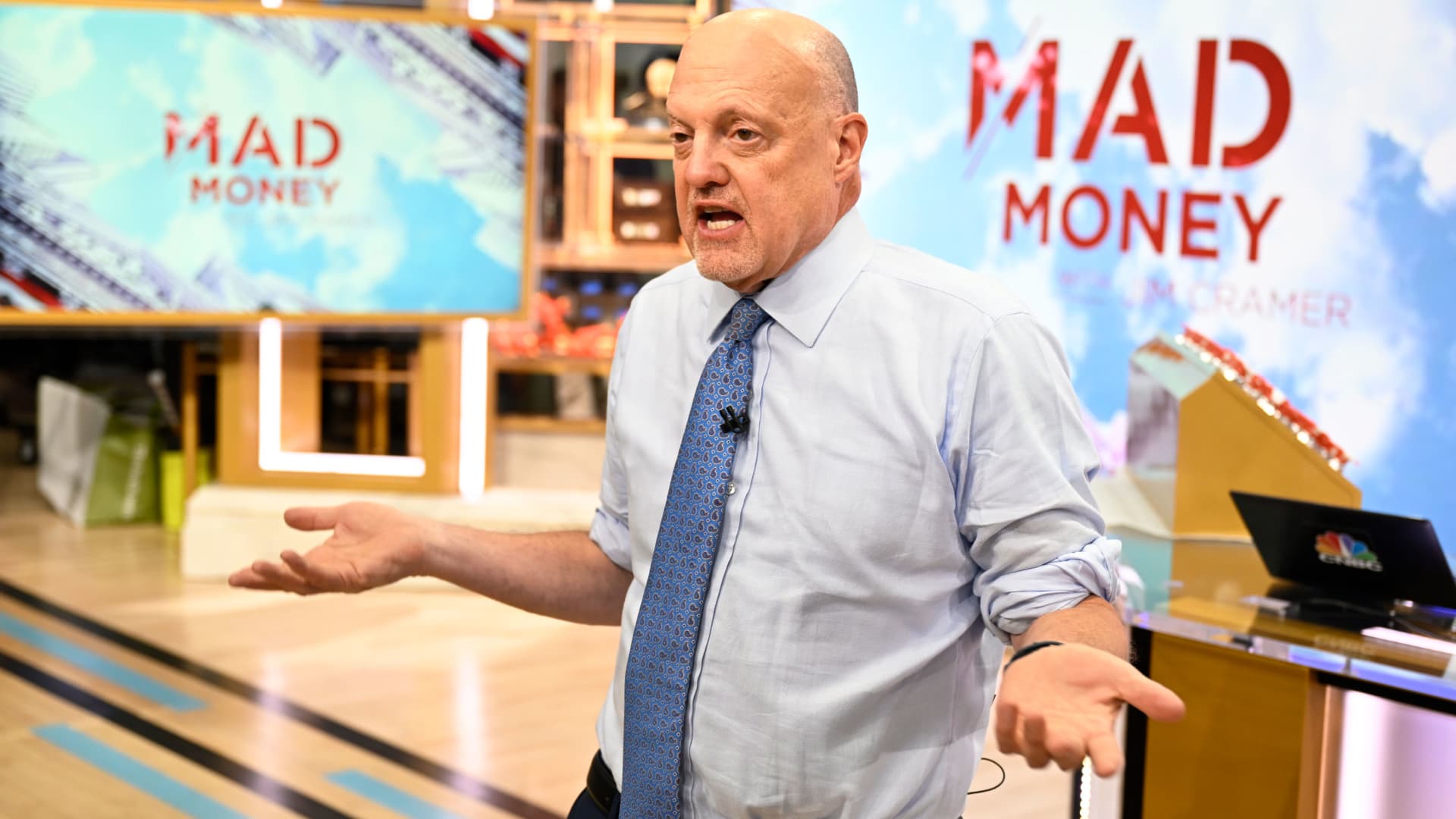Why U.S. ports are getting a $21 billion upgrade
U.S. ports are receiving massive grants as the Biden administration commits federal funds to bolster the domestic manufacturing base.

U.S. ports are receiving multimillion dollar grants to upgrade cargo handling infrastructure.
The grants are part of the Biden administration's $21 billion commitment to modernize port infrastructure in the U.S.
Midsize port cities such as Baltimore are among the 2023 grant recipients. In November, the Port of Baltimore received a $47 million grant to kick-start an offshore wind manufacturing hub, among other improvements. For example, the funds will pay for a new berth, or dock, for rolling cargo. Baltimore is the top U.S. destination for rolling cargo imports, a category including farm machinery from John Deere and light-duty vehicles from BMW, according to the Maryland Port Administration.
More than $653 million in Port Infrastructure Development Program grants were awarded to U.S. ports in 2023 by the U.S. Department of Transportation, Maritime Administration. Other projects receiving federal funds include the Port of Tacoma Husky Terminal Expansion in Washington state ($54.2 million), and the North Harbor Transportation System Improvement Project in Long Beach, California ($52.6 million).
Port improvements are also coming from the Environmental Protection Agency, which offers funds to combat truck idling. The U.S. Department of Defense is deepening some waterways on the East Coast to welcome larger ships.
Baltimore isn't the only city with a growing port according to maritime economists. Experts say gateways along the U.S. southeast coast are moving more cargo as major points of entry clog up with truck traffic.
"All of the ports on the East Coast are upgrading their infrastructure and capacity," said Walter Kemmsies, managing partner at the Kemmsies Group, a maritime economics consulting firm currently working with the Port Authority of Georgia in Savannah. "What that does is it makes it more attractive to the ocean carriers. They like to be able to go in and out of a port very quickly, and they like to go to several ports."
Ports America formed a public-private partnership with the state of Maryland to manage equipment and operations in sections of the Port of Baltimore. The group told CNBC that $550 million in upgrades have gone into Seagirt Marine Terminal alone for densification of the container yard since the partnership began in 2010.
These upgrades build on past plans to revive America's declining industrial cities. In Baltimore, public officials are addressing bottlenecks along the supply chain beyond the Port. They believe that the Howard Street Tunnel expansion project will increase double-stack rail capacity out of Baltimore, which could help the companies working at the port move goods to and from points in the Midwest.
Watch the video above to see more of the upgrades coming to the Port of Baltimore.

 Lynk
Lynk 
































